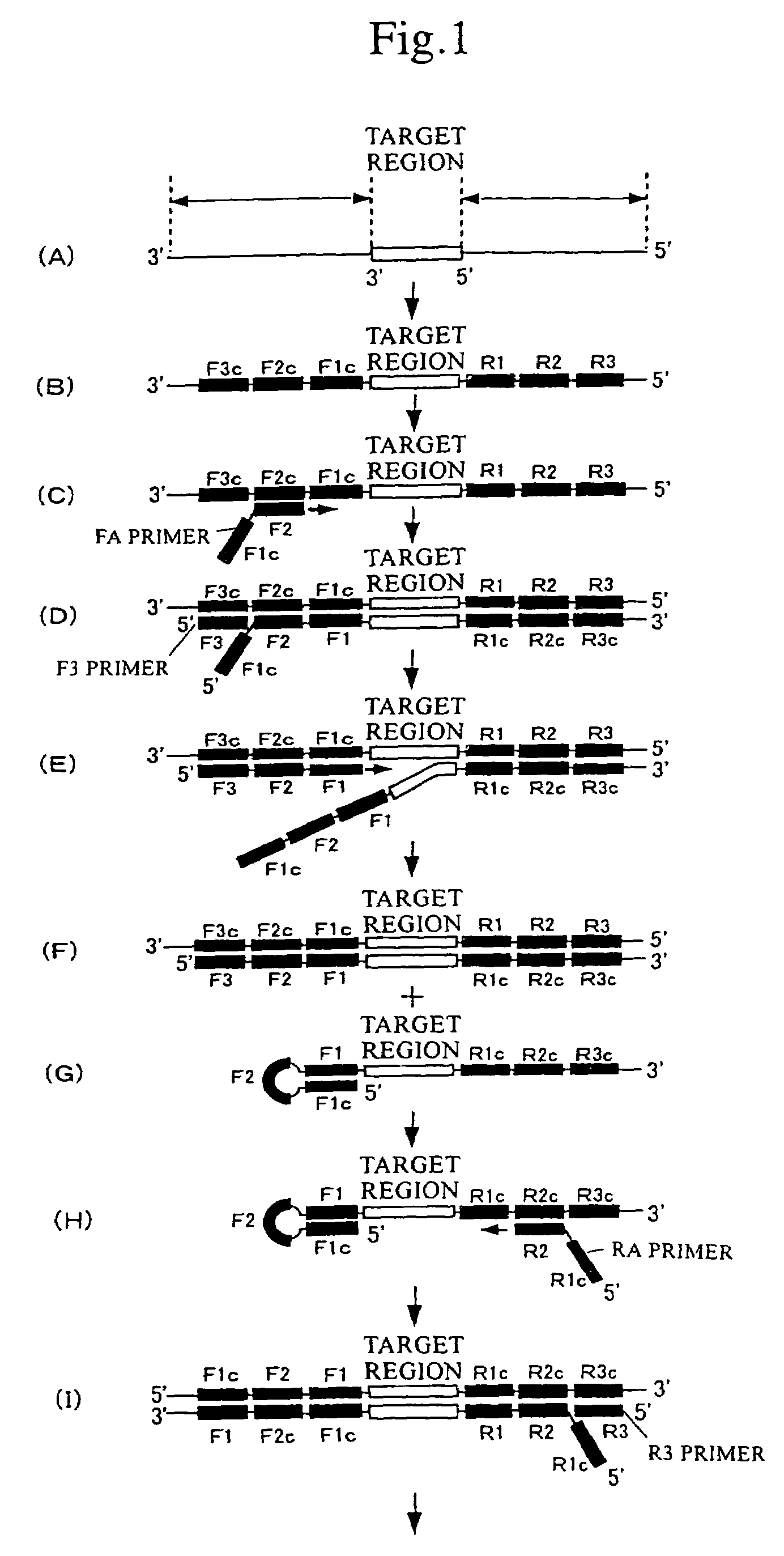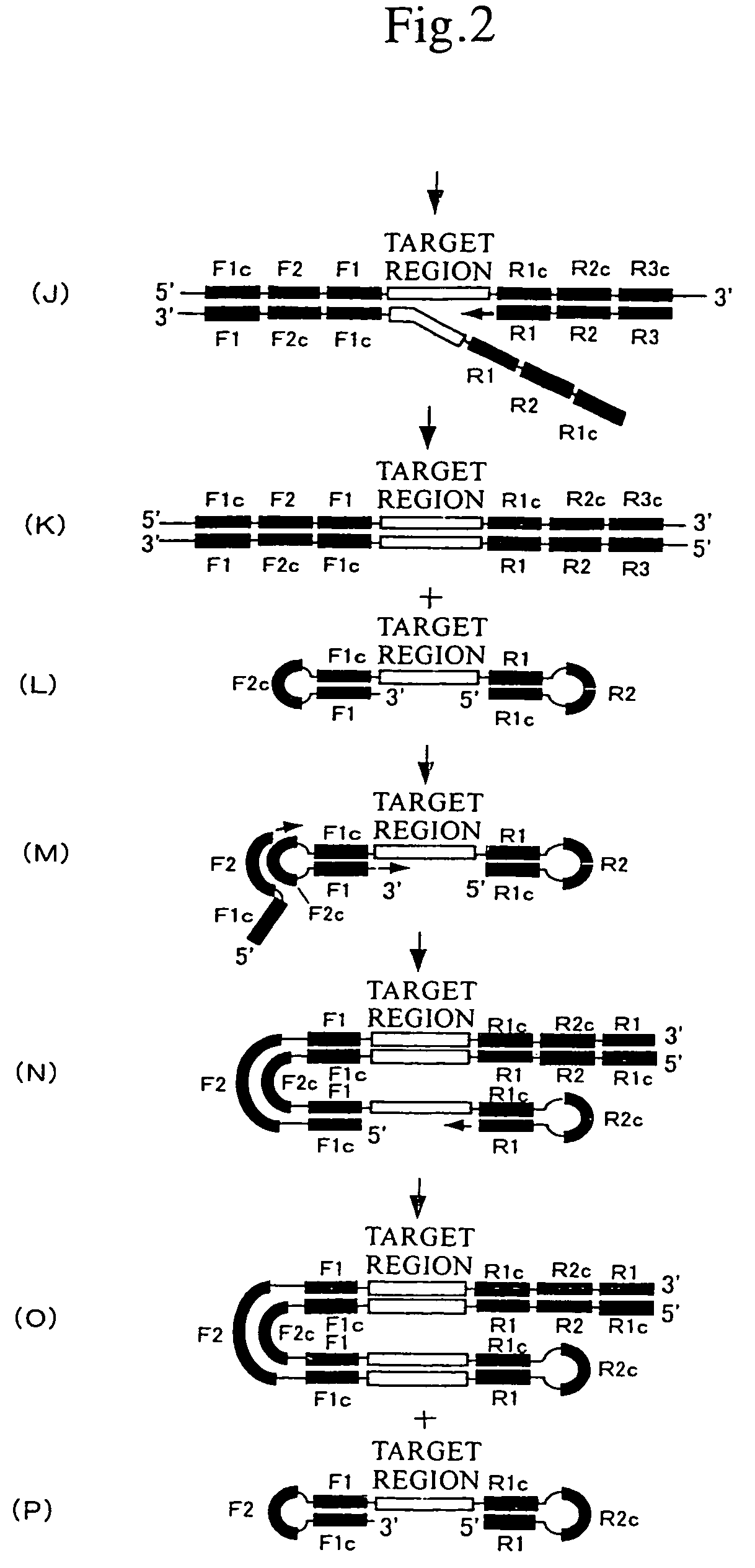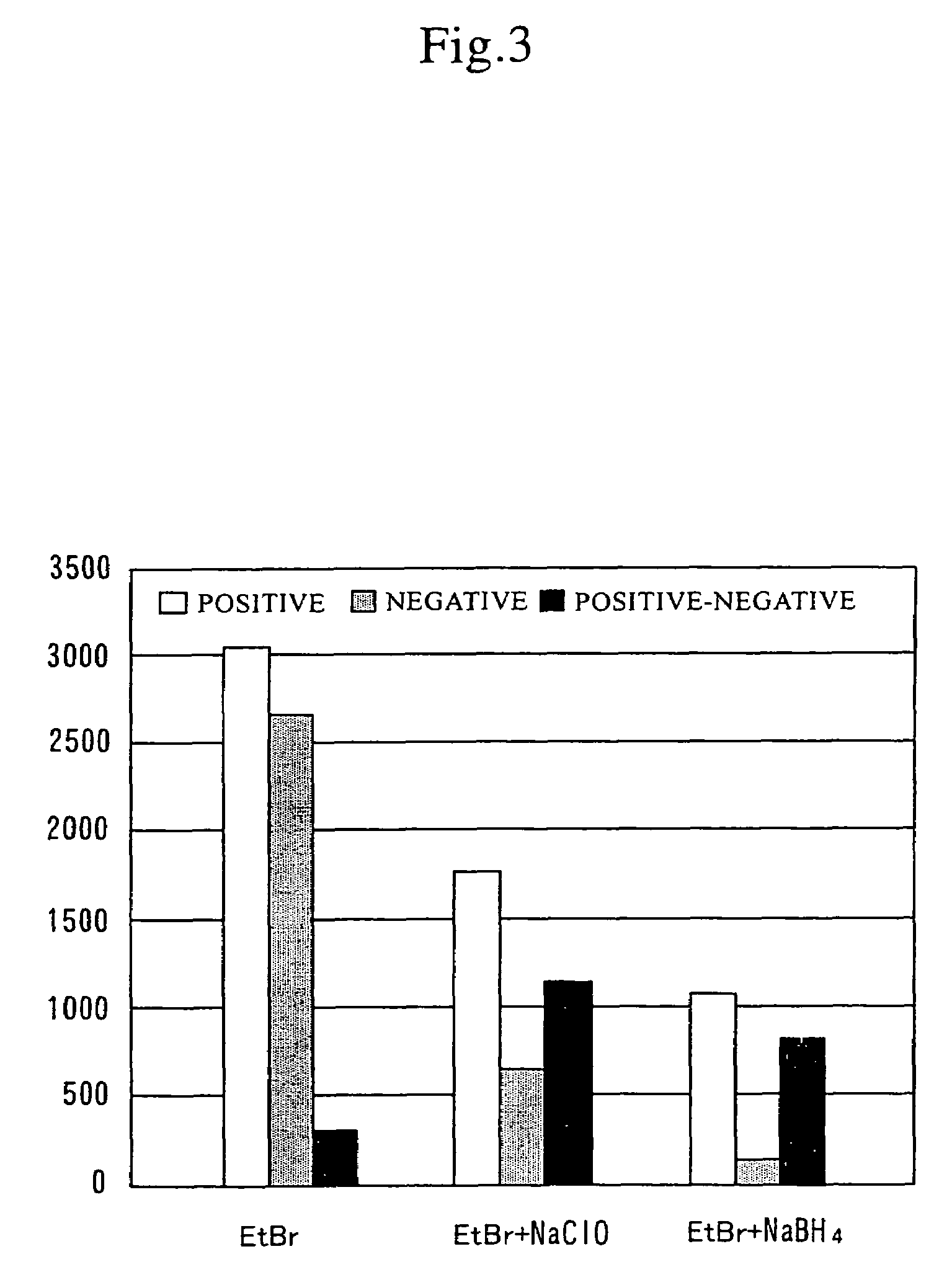Method of efficiently detecting double-stranded nucleic acid
a nucleic acid and double-stranded technology, applied in the field of nucleic acid detection, can solve the problems of high background noise caused by single-stranded primers, which are also present in the primer, and it is difficult to detect only the amplified double-stranded nucleic acids with high sensitivity, and achieve the effect of detecting fluorescence intensity
- Summary
- Abstract
- Description
- Claims
- Application Information
AI Technical Summary
Benefits of technology
Problems solved by technology
Method used
Image
Examples
example 1
Effect of an Oxidant or Reducer On the Detection of the Lamp Reaction Product Using Ethidium Bromide
(1) Nucleic Acid Amplification by the LAMP Method
[0091]
TABLE 1Composition of reaction solutionComposition of reaction solution (in 25 μL)20 mM Tris-HCl pH 8.810 mM KCl10 mM (NH4)2SO44 mM MgSO40.1% Tween 200.4 mM dNTP8 U Bst DNA polymerase (NEB)1.6 μM FA primer1.6 μM RA primer0.4 μM F3 primer0.4 μM R3 primer
[0092]To the above reaction solution, 6×10−20 mol of DNA of prostate-specific antigen (PSA) as a template for the LAMP reaction and ethidium bromide (EtBr, 0.5 μ / ml) for detecting amplification products were added. Amplification was then carried out at 65° C. for 30 minutes. The reaction solution to which template DNA had been added was determined to be a positive reaction solution, and the reaction solution without the addition of template DNA was determined to be a negative reaction solution. In this amplification, the following sequence (SEQ ID NO: 1) included in the template was...
example 2
Effect of an Oxidant or Reducer on the Detection of the LAMP Reaction Product Using Acridine Orange
[0099]The effects of an oxidant or reducer on the efficiency of detecting the LAMP reaction product were inspected under the same experimental conditions as used in Example 1 except that acridine orange was added instead of ethidium bromide and the assay wavelength was set at 575 nm in the amplification of nucleic acids described in Example 1. The assay results are shown in FIG. 4. In the case of the reaction solutions which were not subjected to oxidation or reduction (AO in FIG. 4), the fluorescence intensity of the positive reaction solution was 7,053, and that of the negative reaction solution was 6,155. That is, difference in the fluorescence intensity resulting from the occurrence of products of double-stranded nucleic acid amplification was 898. In contrast, in the case of the reaction solutions which were subjected to oxidation using sodium hypochlorite (AO+NaClO in FIG. 4), th...
example 3
Effect of Another Intercalator On the Detection of the LAMP Reaction Product Using Ethidium Bromide
[0101]The LAMP reaction was carried out under the same reaction conditions as in Example 1 except that, in addition to ethidium bromide, 20 μM of methylene blue, 1 μg / ml of actinomycin D, or 100,000-fold diluted SYBR® Green 2 (Molecular Probes) was added as the second intercalator. Thus, effects of each of the aforementioned second intercalators on the efficiency of detecting the LAMP reaction product were inspected. The results are shown in FIG. 5. In the case of the reaction solutions to which the second intercalator was not added in addition to ethidium bromide (EtBr in FIG. 5), the fluorescence intensity of the positive reaction solution was 3,085, and that of the negative reaction solution was 2,701. That is, difference in the fluorescence intensity resulting from the occurrence of products of double-stranded nucleic acid amplification was 384. In contrast, in the case of the reac...
PUM
| Property | Measurement | Unit |
|---|---|---|
| excitation wavelength | aaaaa | aaaaa |
| excitation wavelength | aaaaa | aaaaa |
| assay wavelength | aaaaa | aaaaa |
Abstract
Description
Claims
Application Information
 Login to View More
Login to View More - R&D
- Intellectual Property
- Life Sciences
- Materials
- Tech Scout
- Unparalleled Data Quality
- Higher Quality Content
- 60% Fewer Hallucinations
Browse by: Latest US Patents, China's latest patents, Technical Efficacy Thesaurus, Application Domain, Technology Topic, Popular Technical Reports.
© 2025 PatSnap. All rights reserved.Legal|Privacy policy|Modern Slavery Act Transparency Statement|Sitemap|About US| Contact US: help@patsnap.com



